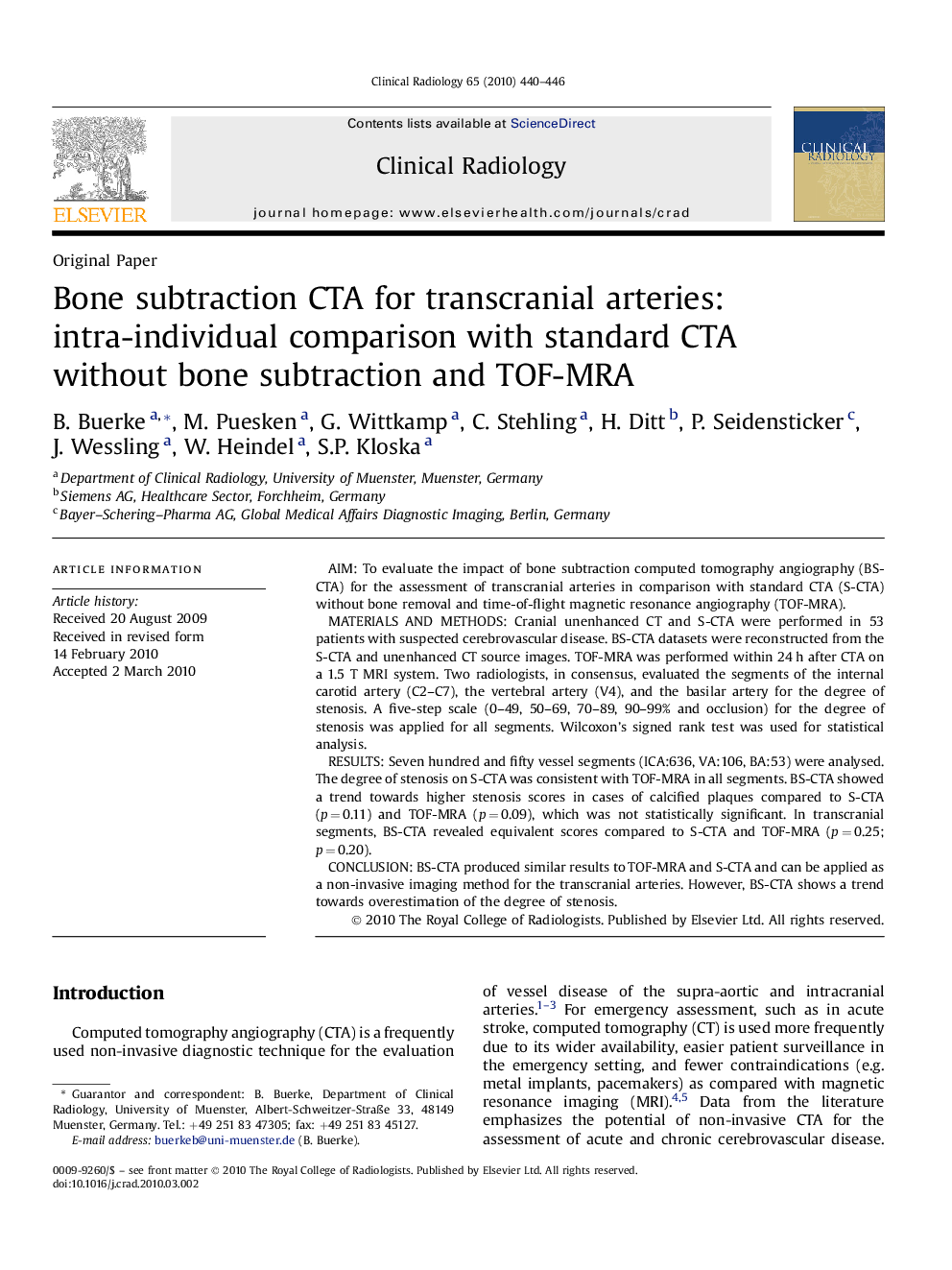| Article ID | Journal | Published Year | Pages | File Type |
|---|---|---|---|---|
| 3983075 | Clinical Radiology | 2010 | 7 Pages |
AimTo evaluate the impact of bone subtraction computed tomography angiography (BS-CTA) for the assessment of transcranial arteries in comparison with standard CTA (S-CTA) without bone removal and time-of-flight magnetic resonance angiography (TOF-MRA).Materials and methodsCranial unenhanced CT and S-CTA were performed in 53 patients with suspected cerebrovascular disease. BS-CTA datasets were reconstructed from the S-CTA and unenhanced CT source images. TOF-MRA was performed within 24 h after CTA on a 1.5 T MRI system. Two radiologists, in consensus, evaluated the segments of the internal carotid artery (C2–C7), the vertebral artery (V4), and the basilar artery for the degree of stenosis. A five-step scale (0–49, 50–69, 70–89, 90–99% and occlusion) for the degree of stenosis was applied for all segments. Wilcoxon's signed rank test was used for statistical analysis.ResultsSeven hundred and fifty vessel segments (ICA:636, VA:106, BA:53) were analysed. The degree of stenosis on S-CTA was consistent with TOF-MRA in all segments. BS-CTA showed a trend towards higher stenosis scores in cases of calcified plaques compared to S-CTA (p = 0.11) and TOF-MRA (p = 0.09), which was not statistically significant. In transcranial segments, BS-CTA revealed equivalent scores compared to S-CTA and TOF-MRA (p = 0.25; p = 0.20).ConclusionBS-CTA produced similar results to TOF-MRA and S-CTA and can be applied as a non-invasive imaging method for the transcranial arteries. However, BS-CTA shows a trend towards overestimation of the degree of stenosis.
